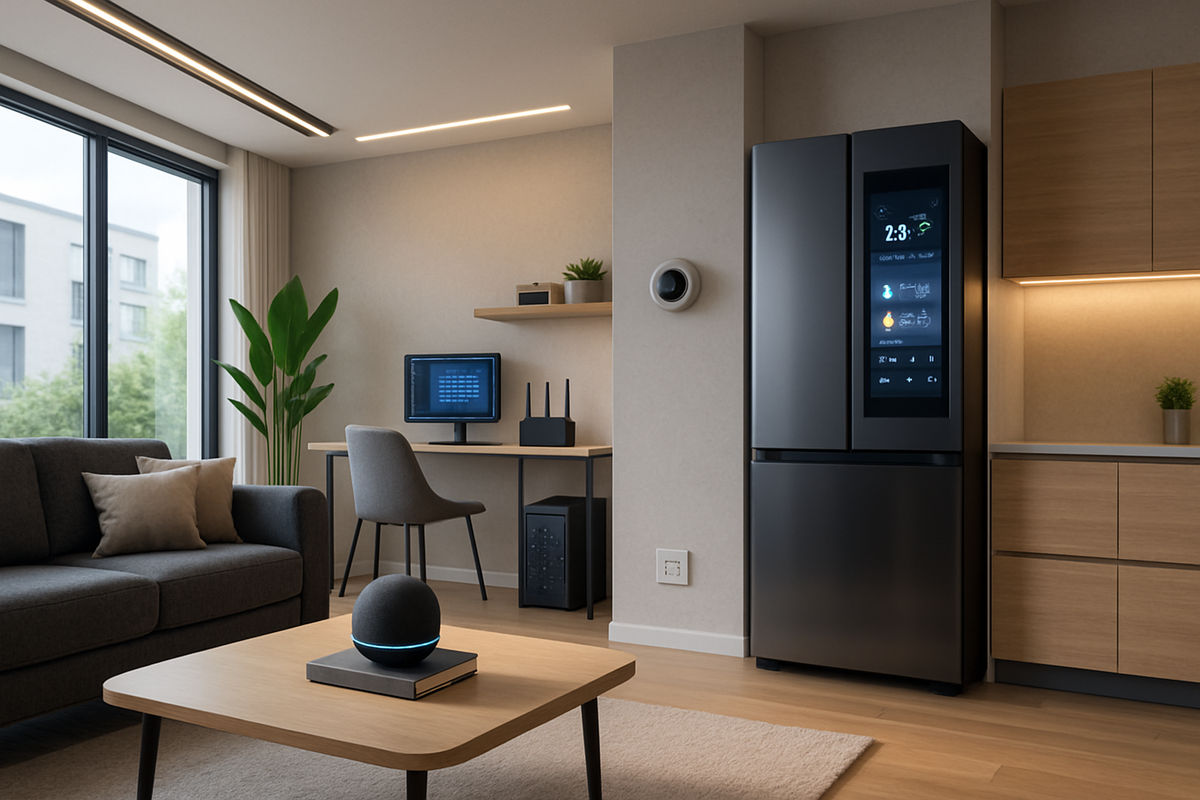The AIoT Home: Building the Ultimate Smart Living Space in 2025
Unlock the future with smart homes powered by AI and IoT. Transform your living space into an intelligent ecosystem that learns, adapts, and secures. Dive into our guide to create seamless automation and maximize efficiency. Welcome to the AIoT revolution.

Welcome to the AIoT Home Revolution
Imagine a home that listens, learns, and leapfrogs your expectations. In 2025, the convergence of Artificial Intelligence and the Internet of Things (AIoT) isn’t just hype—it’s your new reality. Whether you’re a DIY tinkerer, a busy parent, or a sustainability crusader, this hands-on guide will empower you to build the ultimate smart living space, transforming every day into a seamless, secure, and (dare we say) magical experience.
"AIoT isn’t a gadget trend—it’s the nervous system of tomorrow’s home, connecting brains (AI) with brawn (IoT) to anticipate, automate, and optimize daily life."
Step 1: Map Your Smart Home Vision (and Avoid Frankenstein’s Monster)
Start with a goal: What do you want your home to do for you?
- Convenience: Voice-controlled everything, automated routines, zero-touch living.
- Security: AI-powered cameras, real-time alerts, and smart locks.
- Sustainability: Energy optimization, smart thermostats, leak detection.
- Cost Savings: Predictive maintenance, dynamic energy pricing, and usage analytics.
Tip: Sketch a simple diagram of your home and list the rooms, devices, and tasks you want to automate. This is your blueprint—no mad scientist required.
Step 2: Choose Your AIoT Command Center
The heart of your system is the hub: Amazon Alexa, Google Home, Apple HomeKit, Samsung SmartThings—pick one (or bravely mix, if you enjoy troubleshooting as a hobby).
- Amazon Alexa: Best for voice-first experiences and wide device compatibility.
- Google Home: Top-notch AI routines, Google ecosystem integration, and friendly for Android users.
- Apple HomeKit: Privacy-focused, perfect for iPhone/Mac households.
- Samsung SmartThings: Hardware-agnostic, ideal for mixing brands and protocols.
Pro Move: Opt for hubs that support Thread and Matter—the new universal smart home standards—so your devices play nicely together (and don’t ghost you after a firmware update).
Step 3: Layer in Smart Devices—The Building Blocks
Let’s break down the must-have categories for 2025, featuring the latest AI-powered options:
- Voice Assistants: Smart speakers/displays with multi-lingual, context-aware AI. Try Amazon Echo Show 15 or Google Nest Hub Max for central control.
- AI Appliances: Refrigerators that suggest recipes (and order groceries), ovens that recognize food, washers that optimize cycles. Look for LG ThinQ, Samsung Bespoke, and GE Profile series.
- Home Security: AI cameras (Arlo, Ring, Nest) with facial recognition and anomaly alerts, smart locks (August, Yale), and video doorbells with package detection.
- Energy Management: Ecobee and Nest thermostats, Philips Hue lighting, smart plugs, and energy monitors that learn your routines and adjust for max savings.
- Networking Backbone: Wi-Fi 7 mesh routers (Netgear Orbi, Eero Max), with built-in AI to prioritize traffic and squash dead zones.
Insider Insight: Edge AI means many devices now process data locally, boosting privacy and speed. Look for this feature when shopping!
Step 4: Orchestrate Automation & Routines
Here’s where the magic happens. Set up automations using your hub’s app or web dashboard. Some crowd favorites:
- Morning Routine: Lights fade in, coffee brews, thermostat adjusts, and news headlines greet you.
- Security Mode: AI locks doors, arms cameras, and notifies you of unusual activity (not just your neighbor’s cat, thanks to smarter algorithms).
- Energy Saver: Devices shut down when you leave, blinds adjust with the sun, and water leaks trigger instant alerts.
Pro Tip: Use IFTTT or Home Assistant for advanced multi-device integrations. The more you automate, the more your home learns and adapts.
Step 5: Predictive Maintenance & Troubleshooting—AI to the Rescue
2025’s smart home isn’t just about convenience—it’s about resilience. AI-powered monitoring tools (like those described in recent research on vehicle condition monitoring) are now available for HVAC, plumbing, and electrical systems. These can:
- Detect anomalies before breakdowns (saving you those frantic midnight plumber calls)
- Schedule maintenance automatically
- Provide actionable insights via app notifications
Troubleshooting? Most platforms now offer AI chat support and self-diagnostics—don’t be afraid to ask your devices for help. If your dishwasher starts speaking in binary, it’s time to escalate.
Real-Life Case Study: The 2025 Family Smart Home
Meet the Parkers: a family of four, two dogs, and a growing jungle of houseplants. Their highlights:
- Voice-controlled lights and blinds keep mornings peaceful for everyone but the dogs.
- AI-powered leak sensors caught a burst pipe early, saving thousands in repairs.
- Energy bills dropped 23% after installing a smart thermostat and monitoring usage patterns.
- Security cameras with AI facial recognition grant access to trusted relatives—even Grandma, who still thinks Wi-Fi is a dance move.
What did they learn? Plan your integrations, start small, and let your home evolve with you.
Expert Voices: What’s Next for AIoT at Home?
"Edge AI is the game-changer for 2025. Devices process data locally, so your privacy is protected—and your fridge doesn’t need to send a status update to the cloud just to chill your oat milk."
— Dr. Lina Torres, IoT Security Researcher
Expect even tighter integration, more adaptive routines, and sustainability features—from AI-optimized solar panels to appliance-sharing platforms (yes, even your washing machine could moonlight for extra cash).
FAQs: Building Your AIoT Home in 2025
- Is everything compatible? With Matter and Thread, most new devices are. For older tech, consider a universal hub or bridge.
- How secure is my data? Look for devices with local processing, two-factor authentication, and regular updates. Privacy is now a top selling point.
- Can I retrofit my existing home? Absolutely! Smart plugs, bulbs, and sensors make it easy to upgrade without tearing down walls.
- What’s the best way to start? Pick one room or function (like lighting or security), master it, then expand. Rome—and your AIoT palace—wasn’t built in a day.
Ready to Build Your Future?
The AIoT home isn’t just a tech playground—it’s a living, learning ecosystem that adapts to your needs, saves you money, and keeps you safe. The best part? You don’t have to do it alone. Join our community for the latest guides, expert Q&A, and real-life stories from fellow smart home pioneers.
Want to comment, ask questions, or share your AIoT hacks?
Subscribe for free at Funaix Insider to join the conversation. Only subscribers can unlock the full experience (and it’s free—for now!).
© 2025 Funaix. Smart news, smarter living.




